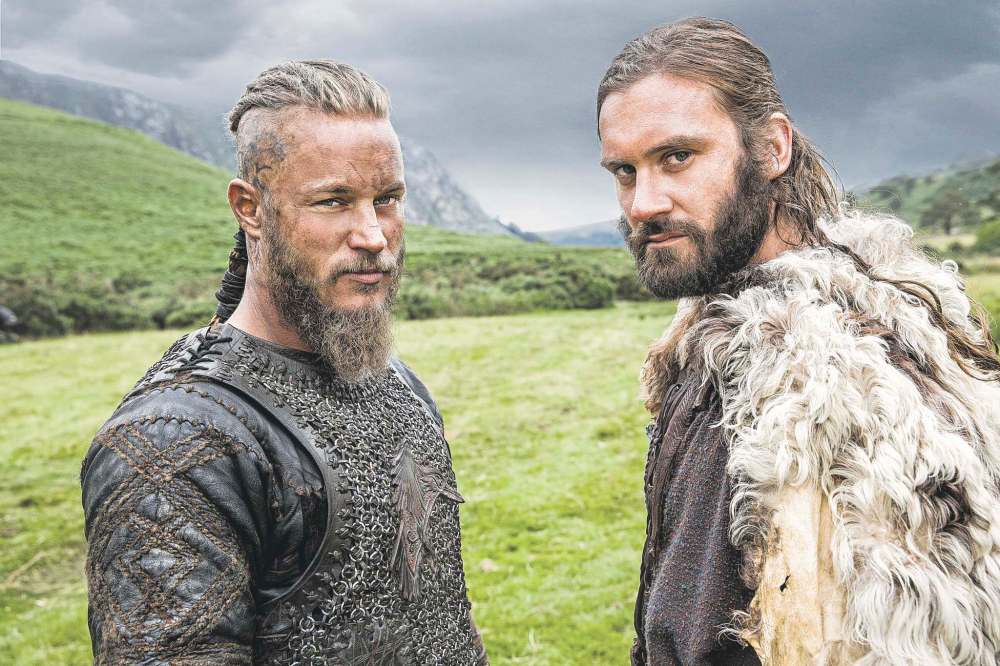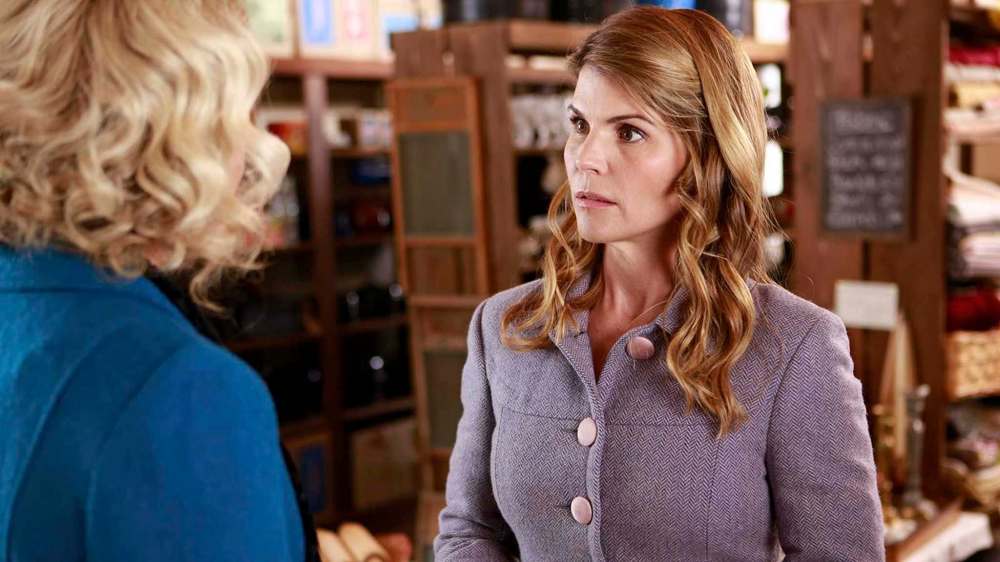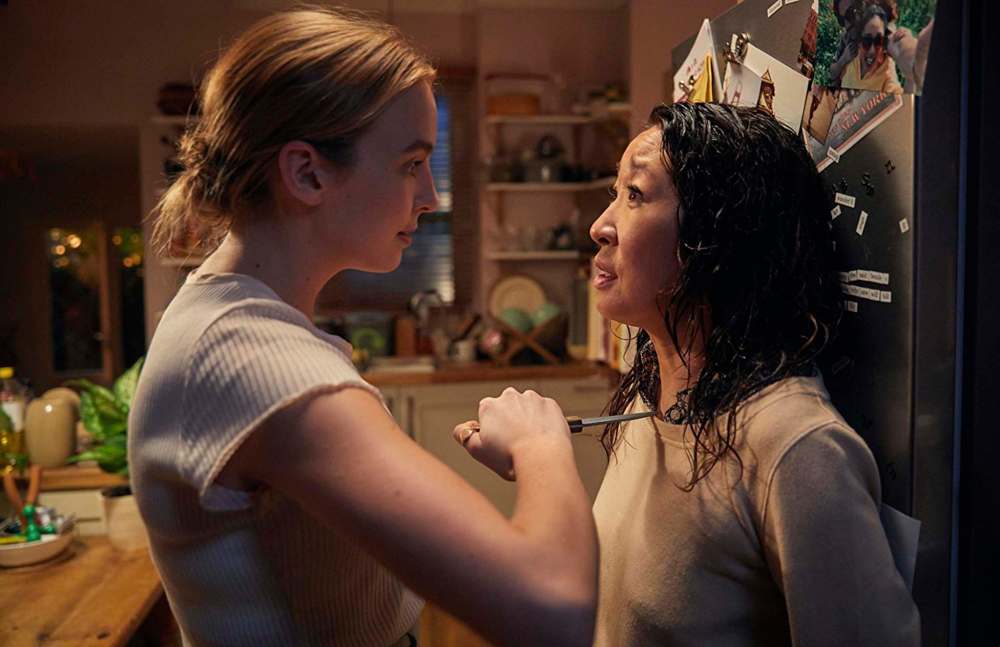Reports of cable’s death exaggerated
Surprise success of certain shows in age of streaming proves cord-cutting hasn't doomed traditional TV
Advertisement
Read this article for free:
or
Already have an account? Log in here »
To continue reading, please subscribe:
Monthly Digital Subscription
$1 per week for 24 weeks*
- Enjoy unlimited reading on winnipegfreepress.com
- Read the E-Edition, our digital replica newspaper
- Access News Break, our award-winning app
- Play interactive puzzles
*Billed as $4.00 plus GST every four weeks. After 24 weeks, price increases to the regular rate of $19.00 plus GST every four weeks. Offer available to new and qualified returning subscribers only. Cancel any time.
Monthly Digital Subscription
$4.75/week*
- Enjoy unlimited reading on winnipegfreepress.com
- Read the E-Edition, our digital replica newspaper
- Access News Break, our award-winning app
- Play interactive puzzles
*Billed as $19 plus GST every four weeks. Cancel any time.
To continue reading, please subscribe:
Add Winnipeg Free Press access to your Brandon Sun subscription for only
$1 for the first 4 weeks*
*$1 will be added to your next bill. After your 4 weeks access is complete your rate will increase by $0.00 a X percent off the regular rate.
Read unlimited articles for free today:
or
Already have an account? Log in here »
Hey there, time traveller!
This article was published 23/03/2019 (2366 days ago), so information in it may no longer be current.
As the writers on Hallmark Channel’s Canadian-frontier drama When Calls the Heart were killing off a departing lead actor at the end of last season, a movement worthy of a hundred mounted police surged forward.
The show’s fans, known as Hearties, grappled vocally with the move to kill off the character. After much debate, some came to a reluctant acceptance. Others were less appeased. They formed a splinter group, called Hurties, to protest the killing of the character, named Jack and played by Daniel Lissing.
“The whole situation is terrible,” fulminated one user on Twitter, adding the hashtags #hurties #notwithoutjack and #missinglissing for punctuation.

Such hardcore devotion may surprise even avid TV viewers, who are not likely to pay much attention to a wholesome period series airing on a basic-cable network far up the dial. But the loyalty demonstrates how even in this age of streaming, when the latest Netflix black comedy is endlessly hashed out by upscale audiences on Twitter, basic cable has not disappeared (nor gone exclusively with its cheaply produced bread and butter of reality television). In some ways, in fact, scripted cable is stronger than it has been in years.
As many industry figures and pundits lament the scourge of cord-cutting — in which viewers are abandoning cable subscriptions because they do not care enough about the shows being offered to pay for them — the Hearties and the show they love refute the point. The fans are expressing a level of interest that will keep them paying their Comcast, Charter and DirecTV bills for years to come.
“Faith, hope and love, but in ways that are not corny?” said Sheri Lynn DiGiovanna, director of communication at First Unitarian Universalist Church of Nashville, who runs the Hearties website and is a leading figure on its Facebook group, which now counts about 70,000 fans. “People are starving for this.”
Those fans, it turns out, mean a lot to the show. And the show means a lot to Hallmark, which along with a few other ad-supported cable networks has managed to locate an anchor amid the storm.
The Hearties’ dedication was on display last week when Hallmark was forced to deal with star Lori Loughlin’s alleged involvement in the college admissions bribery scandal. Loughlin, who stars as widow Abigail Stanton on Heart, was quickly fired by Hallmark after the scandal broke. The network said it would not air the newest episode, the season’s sixth, last Sunday.
But fans quickly rallied. They starting a campaign with the hashtag #Hearties4S6, imploring producers and Hallmark chief Bill Abbott to find a way to keep going without its most recognizable name. Late last week, executive producer Brian Bird said on Instagram the show will go on “a creative hiatus to do some retooling” — she’d be written and edited out of the season’s remaining seven episodes, but the show will return.
A Hallmark Channel spokeswoman did not respond to requests to comment for this story.
When Calls The Heart is a lead example of how to make the numbers work for pricey scripted content in 2019, but it is not the only one.
On BBC America, the assassin drama Killing Eve saw its audience grow by 86 per cent after a little-seen première in mid-2018, to 1.25 million for the finale. That ensures a second season that begins next month has a solid audience foundation to build on.
History Channel’s scripted epic Vikings has managed to hover around two million total viewers the past few seasons, including one that just ended in January, giving it life for a planned final sixth season.
And while a once-major hit like The Walking Dead has been dropping in its ninth season on AMC, episodes still regularly average more than five million viewers. These are not massive totals. But they are steady, on a platform disparaged by pundits.

“I think the death of cable is being prematurely called out,” said Bruce David Klein, head of the TV production company Atlas Media Corp., who also serves on the executive committee of industry trade group the National Association of Television Program Executives. “The networks that have a specific identity where you know what you’re going to get — like Hallmark, where you know you’re going to see warm and friendly shows and movies — have a future. They stand out in a climate where a lot of companies’ programming is really hazy.”
In late January, Comcast and Charter Communications, the two largest cable providers in the United States, reported cable-revenue growth in the mid-single digits for the most recent quarter — hardly a booming success, but evidence that some networks are pulling in viewers, or at least not losing them the way they once were.
The research suggests that while adoption of online streaming services is on the upswing, “actual cord-cutting activity remains steady,” according to research firm Cowen upon the release of the Charter figures.
But few are performing like Hallmark and its two smaller sister networks owned by Crown Media. Initially a hybrid cable operator and content producer, the company went public in 2000 and continued selling shares on the open market until three years ago. Hallmark is one of the few major cable networks not owned by a conglomerate.
Hallmark has had success with its Christmas movies, which it shows in rapid succession around the holidays, as many as three dozen in a given year. The company manages to keep budgets low, shooting those movies in as little as a few weeks and for as low as one or two million dollars, less than many independent theatrical films.
Executives also have found find actors with the right mix of virtues. They often cast 1980s and 1990s television stars recognizable to Hallmark’s older viewers — Loughlin and her Full House co-star Candace Cameron Bure, General Hospital’s Jack Wagner, Party of Five actor Lacey Chabert, The Wonder Years’ Danica McKellar — but not so recognizable they cost a lot.
“Let’s not overlook the casting formula they’ve hit on (as a reason for success),” said a veteran talent agent, speaking on condition of anonymity because he was not authorized to talk to the press. While such stars may not single-handedly attract millions of viewers, the agent said, it gives Hallmark executives all they need.
The network has picked its spots carefully, and its two other original scripted shows, The Good Witch and Chesapeake Shores, are still on the air at least four seasons in, often drawing two million viewers per episode themselves.
And then there’s Heart. Set in a Western Canada coal-mining town circa 1910, with heapings of romance and gently peddled tragedy, the series improbably continues to gain in popularity. Since its sixth-season première a few months ago, it has averaged 2.9 million total viewers. That is a number Mad Men, one of the most buzzed-about shows in the history of cable, failed to reach in every single one of its seven seasons on AMC.
The show has defied not just cable gravity but the downward pull of mature shows. Few television series gain viewers in their sixth season. But the 2.9 million number is up nearly 20 per cent from the figure at the identical point last season — which itself hit all-time viewership highs. Heart was big at Christmas, when a two-hour special was the most-watched episode in the show’s history, garnering nearly five million viewers within three days of its initial airing. It was also the most viewed of any scripted cable show at the end of December.
Part of Hallmark’s success is demographic. Its shows are popular with audiences in their 40s and older, who are less likely to cut the cord. About 85 per cent of the audience for the network’s series is at least 50, according to a breakdown of Nielsen figures. The demos for the movies skew younger, but only slightly — the highly watched The Christmas Cottage in 2017, for instance, garnered 4.6 million viewers, but nearly 80 per cent were 50 or older.

The shows’ appeal may also be heightened by the search for light in dark political times.
But maybe the biggest factor is personal. With Heart numbering among just a few original series on Hallmark, the network has — and takes — the time to cultivate relationships with fans that go far beyond traditional marketing and social media. The production invites several hundred fans to the series’ Vancouver set for regular “reunions,” often making cast and crew available to chat. DiGiovanna, who runs the Hearties website, estimates she has met Loughlin a half-dozen times.
“Your private messages of support and your #Hearties4S6 worldwide trending on Thursday brought a lot of tears to the eyes of our cast and crew and to the good folks at Hallmark Channel,” executive producer Bird wrote in his Instagram post last week. “Your love for When Calls the Heart is the courage we count on as we work through this challenging transition… We love you!”
Hallmark’s success should be taken in context. Even three million viewers is still low compared with many hits on HBO. And unlike pay channels, basic cable relies on ad dollars, which tend to flow less freely for the older demographics that Hallmark appeals to. That makes the longer-term business outlook less certain.
Still, in the current cable-ditching landscape, many network executives would dive into a coal mine tomorrow for the engagement When Calls the Heart inspires.
“It’s a movement,” said DiGiovanna, noting she thought this would not wane with Loughlin’s departure. “A movement to get family-friendly shows that are also smart and quotable. A movement,” she added, “that’s all about loving this great show you can’t get anywhere else.”
— Washington Post


